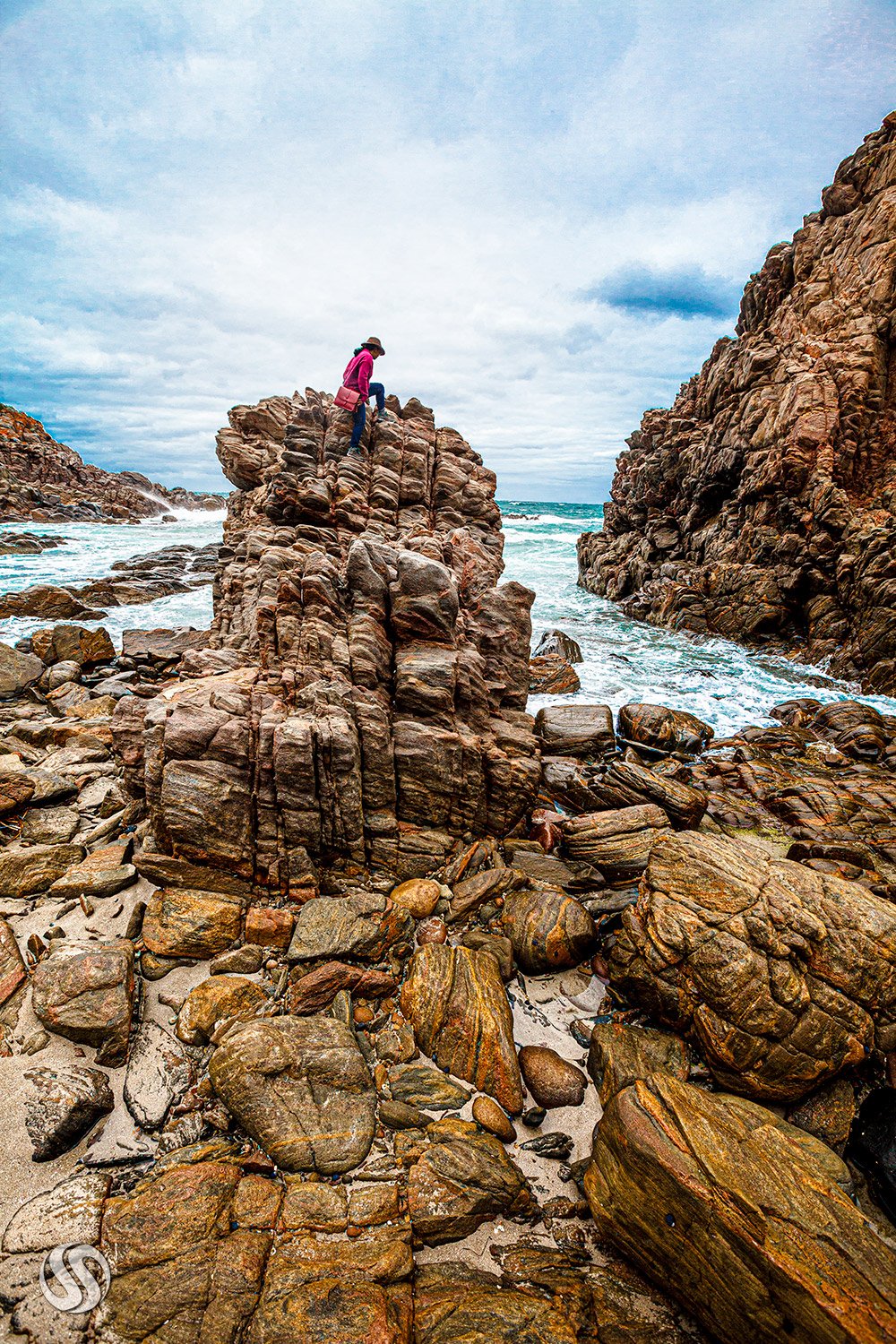
Situated on the wild southern coast of Yorke Peninsula, Yondah Beach in Foul Bay, is a private beach accessible to the guests of the award winning Yondah Beach House.
Surrounded by cliffs on three sides, this secluded nook consists of beautiful rock formations, a small patch of sandy beach and access to the ocean.
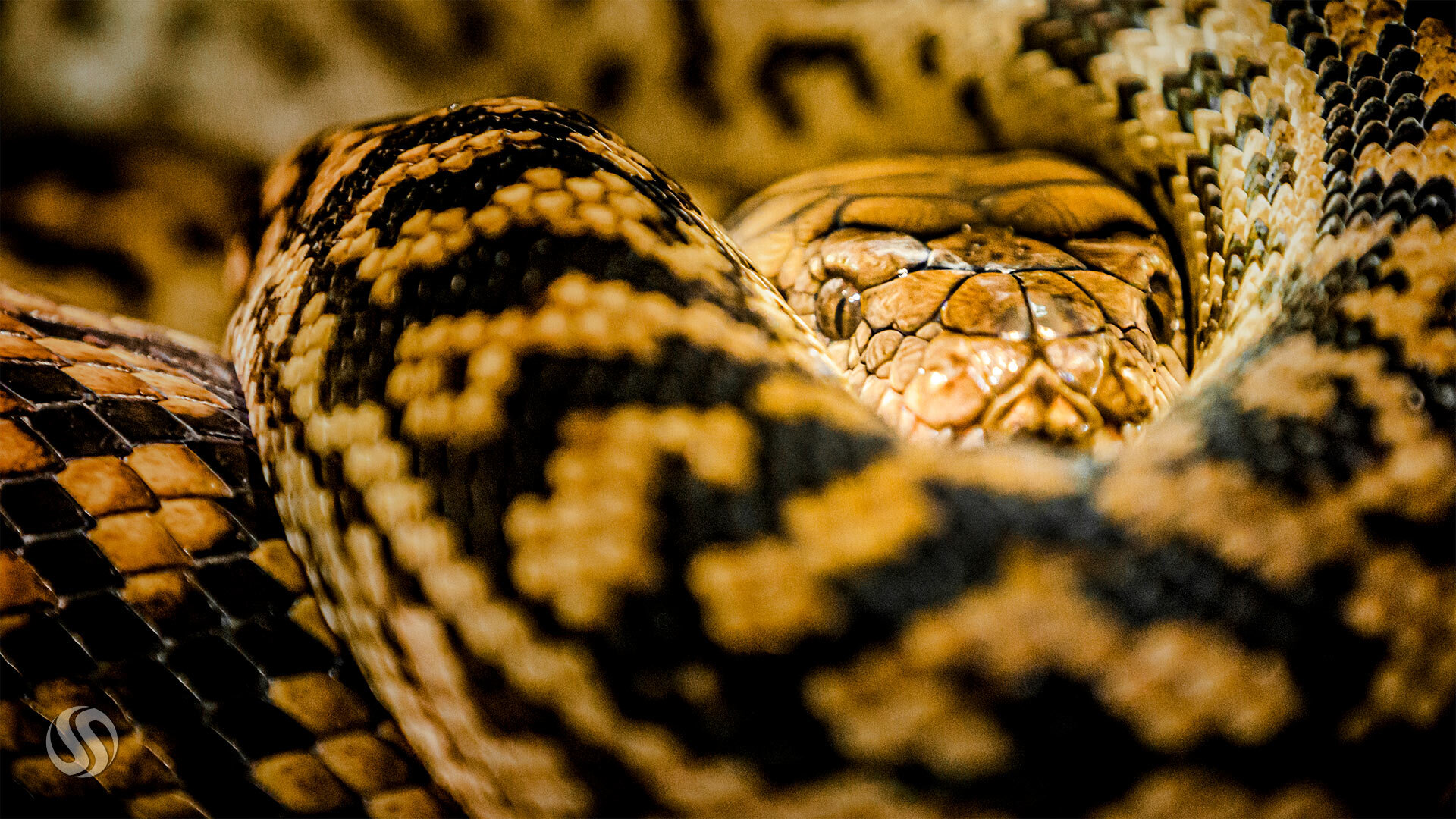
Kaa is the resident Scrub Python (Simalia Amethistina) at the Reptile House in Healesville Sanctuary.
Visit Kaa on Healsville Sanctuary website.
Read about Scrub Pythons on Wikipedia.
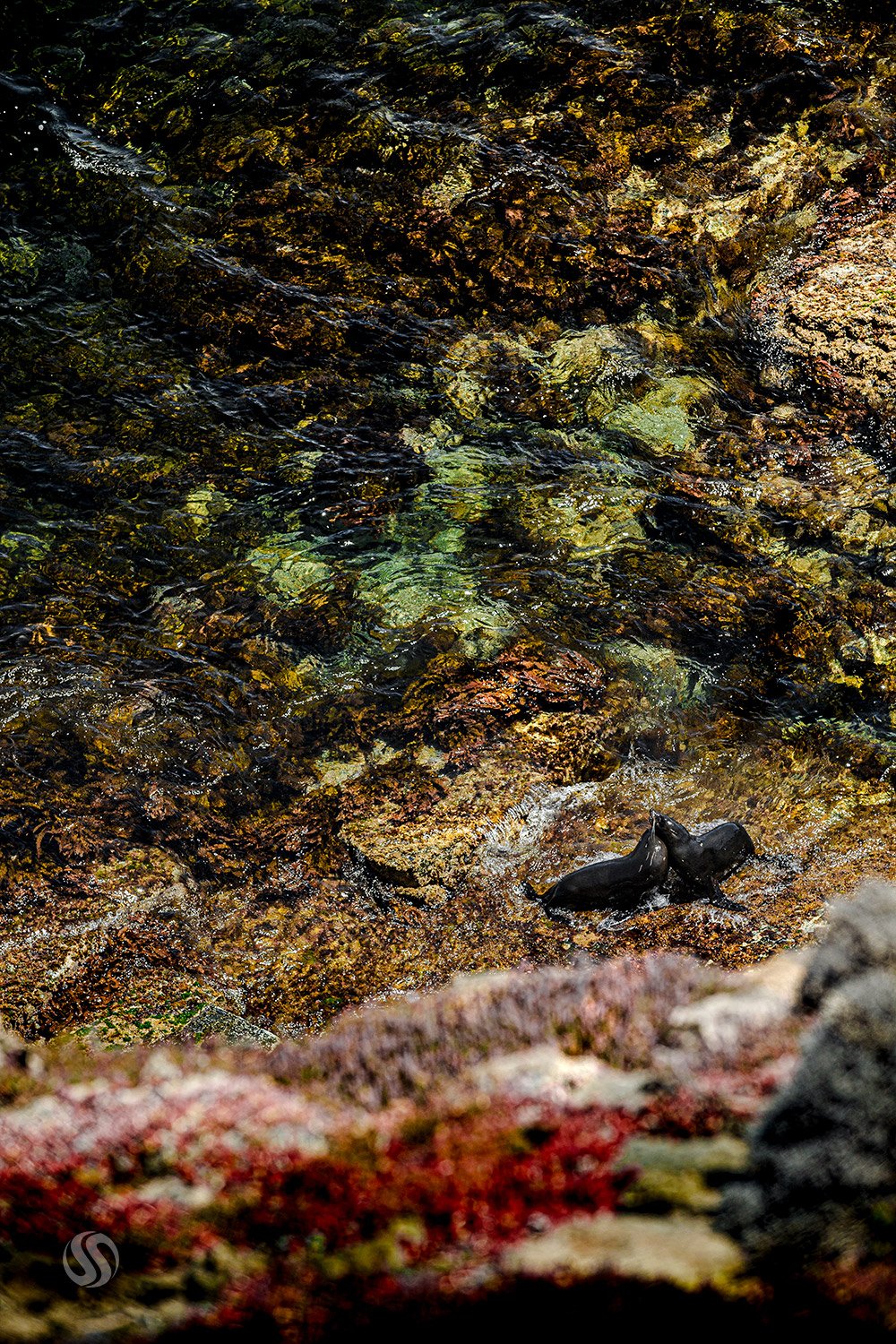
The shores of South Australia’s Kangaroo Island are home to almost 100,000 Long Nosed Fur Seals. About 2m in length and weighing 250kg, these graceful swimmers can reach ocean depths of almost 400m. Seen here, are two pups at play in the shallow waters and rocks of Admiral’s Bay.
See this location on Google Maps
Learn about Arctocephalus forsteri
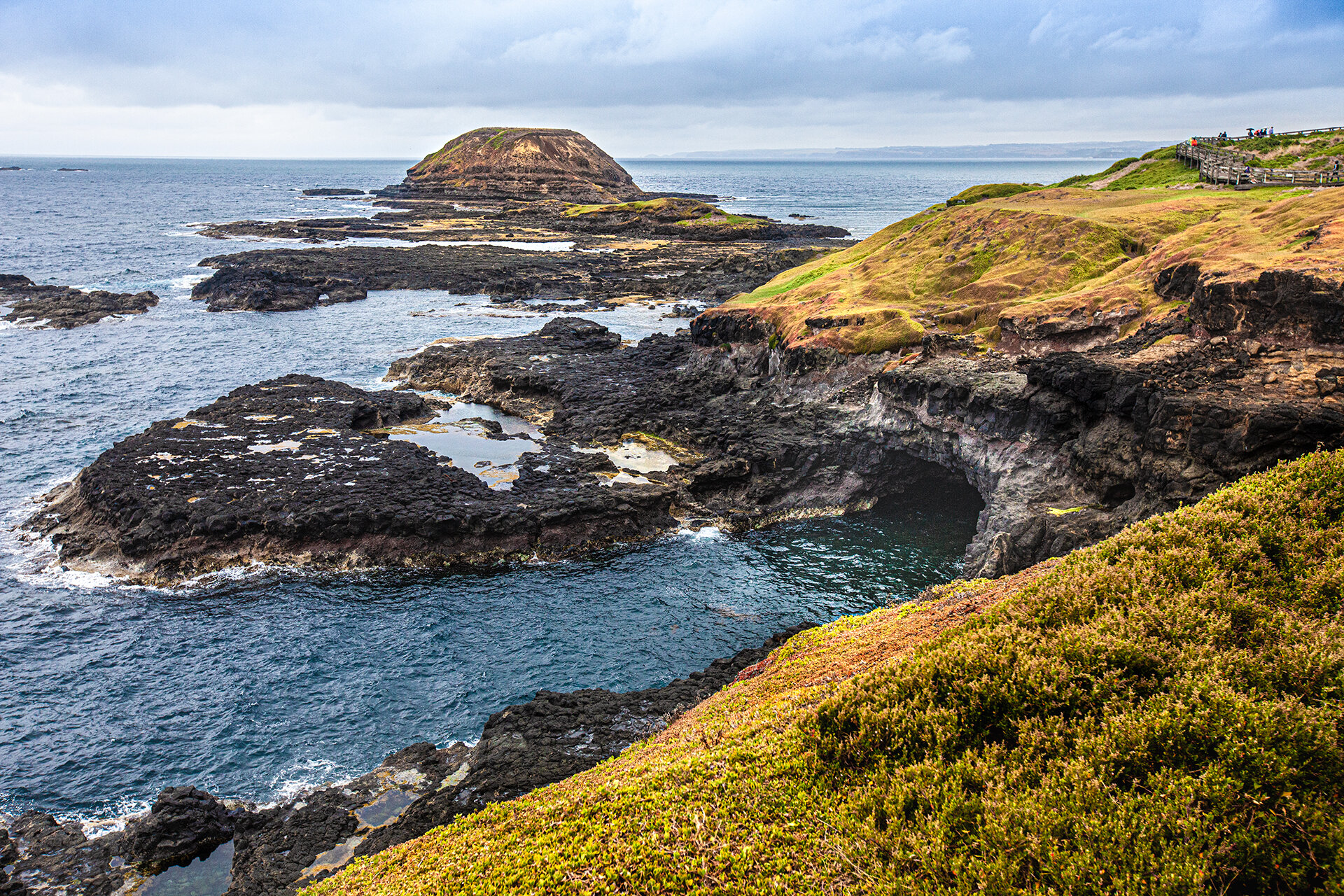
Seen here are the amazing rock formations of the Nobbies in the background, and the mouth of the blowhole in the foreground.
Visit the Nobbies on Google Maps.

Just off the Pennington Bay Road, protruding in to the ocean, this rock resembles a creature slithering in to the water when viewed from the beach during low tide.
Though many visitors see the top of this rock from Pennington Bay Road, few venture down to see it from the beach where it comes alive.
The Sea Dragon Rock as well as the Sea Dragon Cave can be accessed via the Pennington Bay Beach Access Path near the car park.
See the Sea Dragon Rock on Google Maps
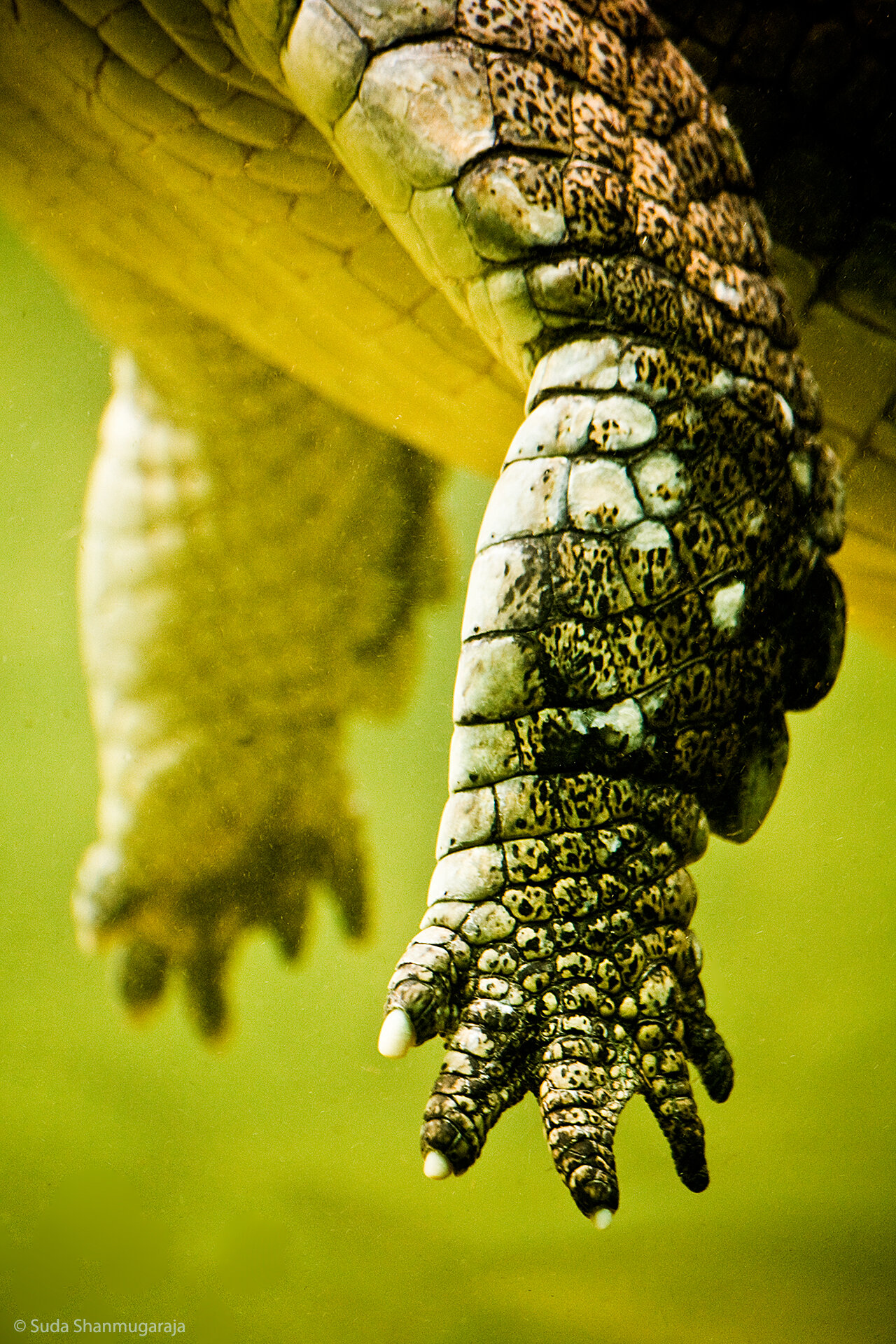
Shot through an underwater research portal at the Madras Crocodile Bank Trust and Centre for Herpetology.
Visit the croc bank website.
Visit the croc bank on Google Maps.
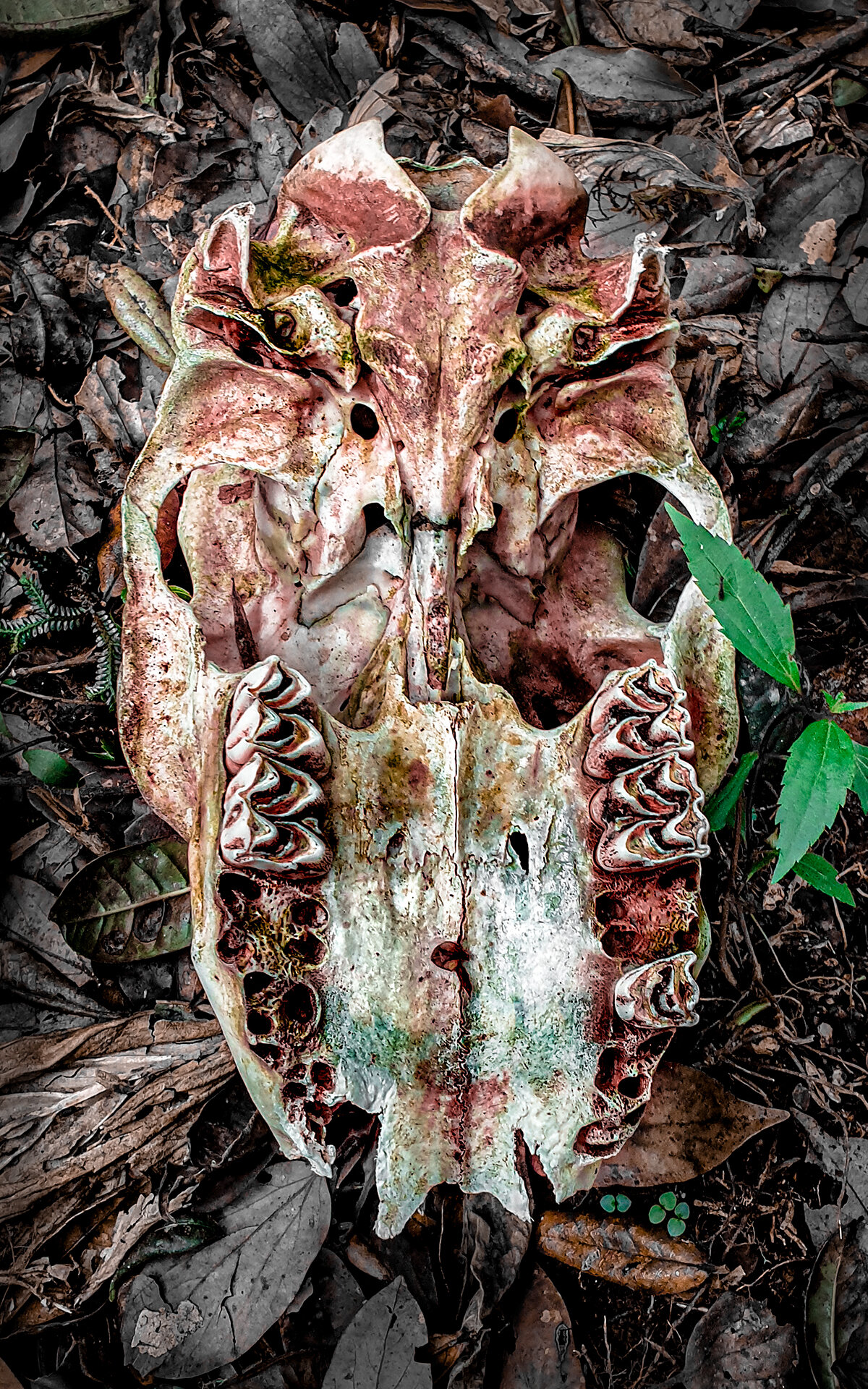
Skull of a sambar deer on the forest floor.
Leopards are the primary predator of sambar in the central grasslands of Sri Lanka's montane zone. The estimated sambar density here is about 178/km², while the leopard density here is 11.7 per 100km².
Visit Horton Plains National Park on Google Maps.
Read the source of these statistics.
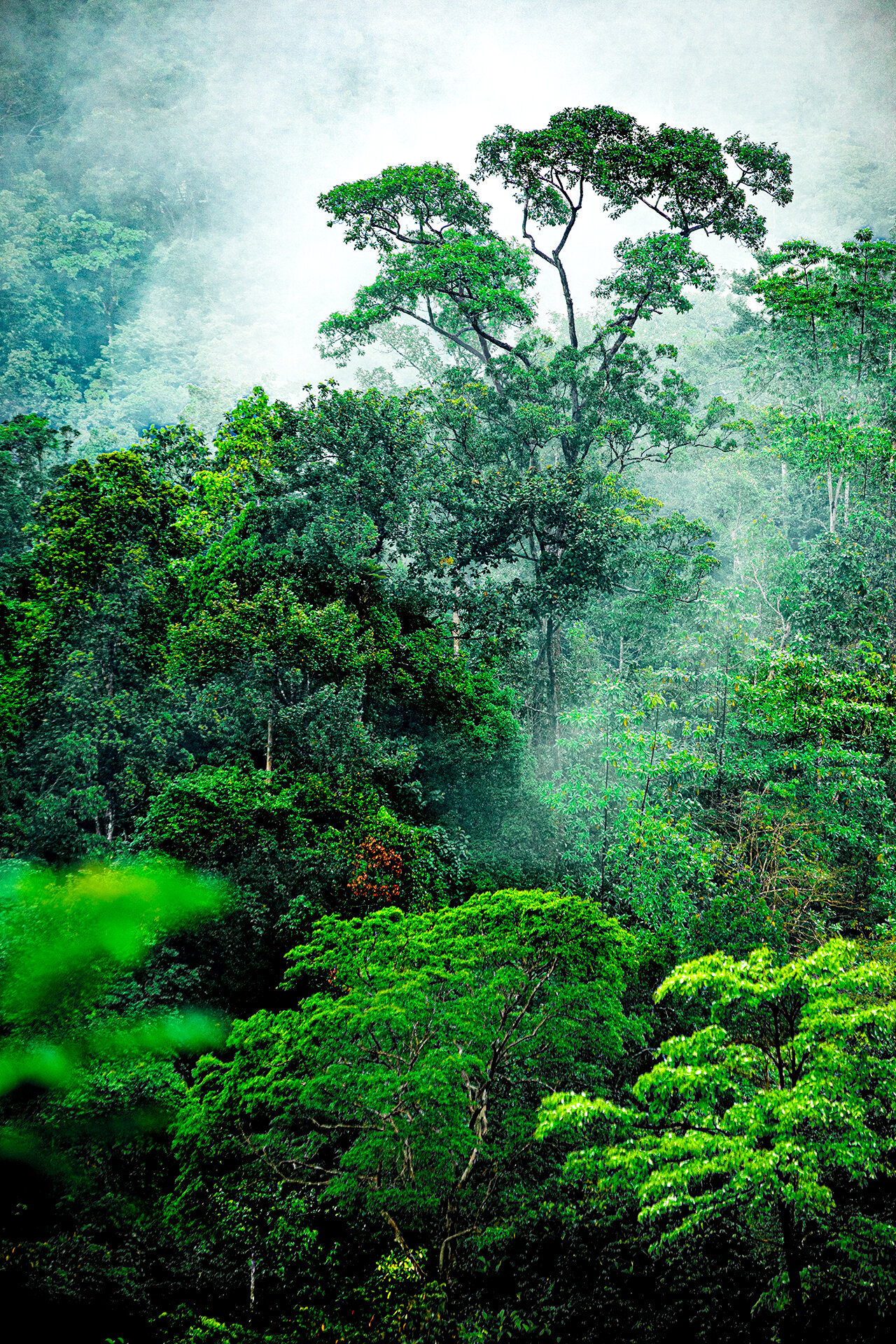
While this forest reserve covers an area of less than 90 sq.km, it is of global significance and has been designated a Biosphere Reserve and World Heritage Site by UNESCO.
Visit the Sinharaja Forest Reserve on Google Maps.
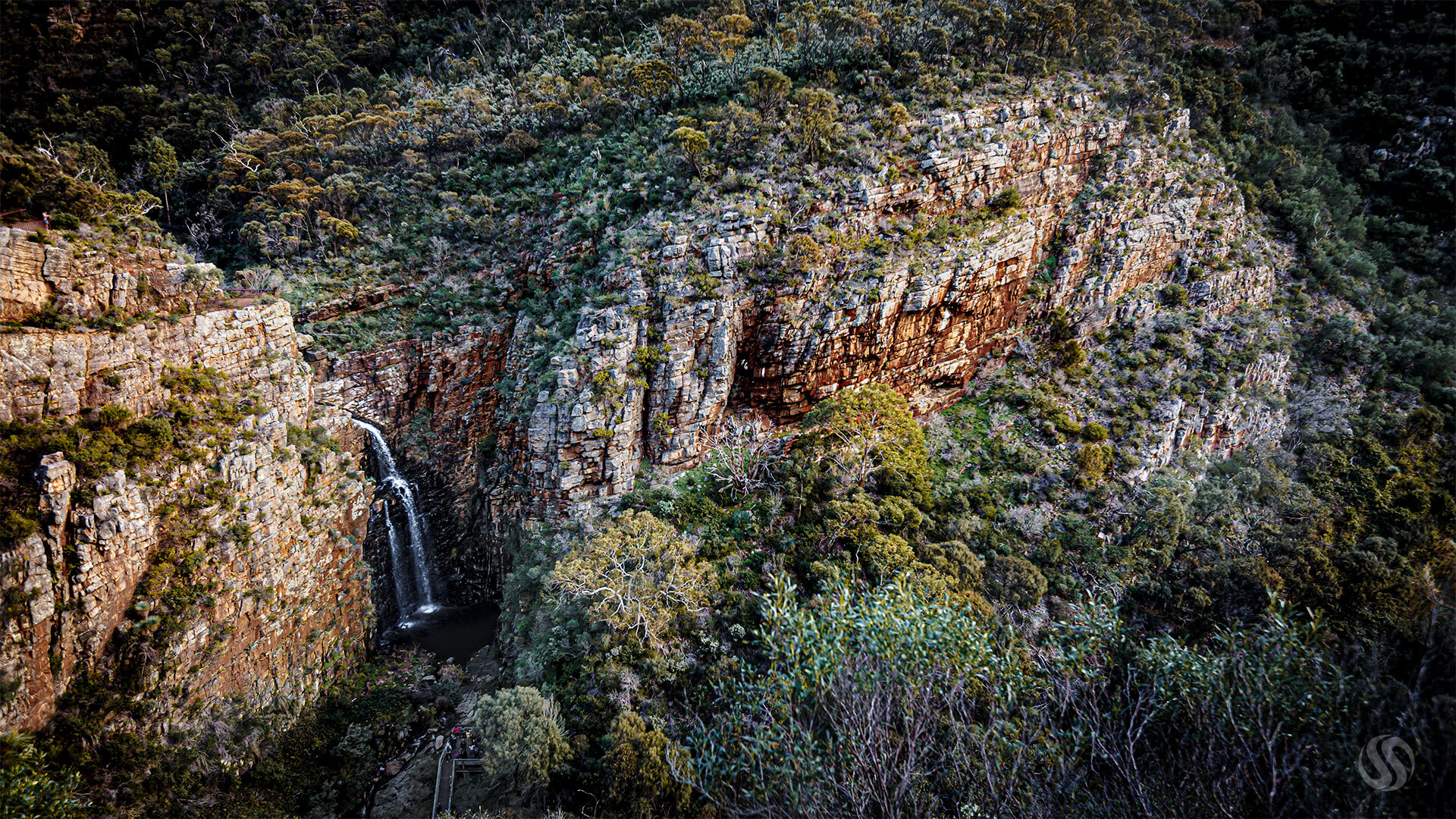
The Eagles Nest Lookout is found on the Yurrebilla Trail of the Morialta Conservation Park. This lookout is one of the best places to see the Morialta waterfall set amidst the beautiful quartzite cliffs. The seasonal falls of the park are at their grandest after the rains. The water flow is strongest during spring or winter.
Visit this location on Google Street View
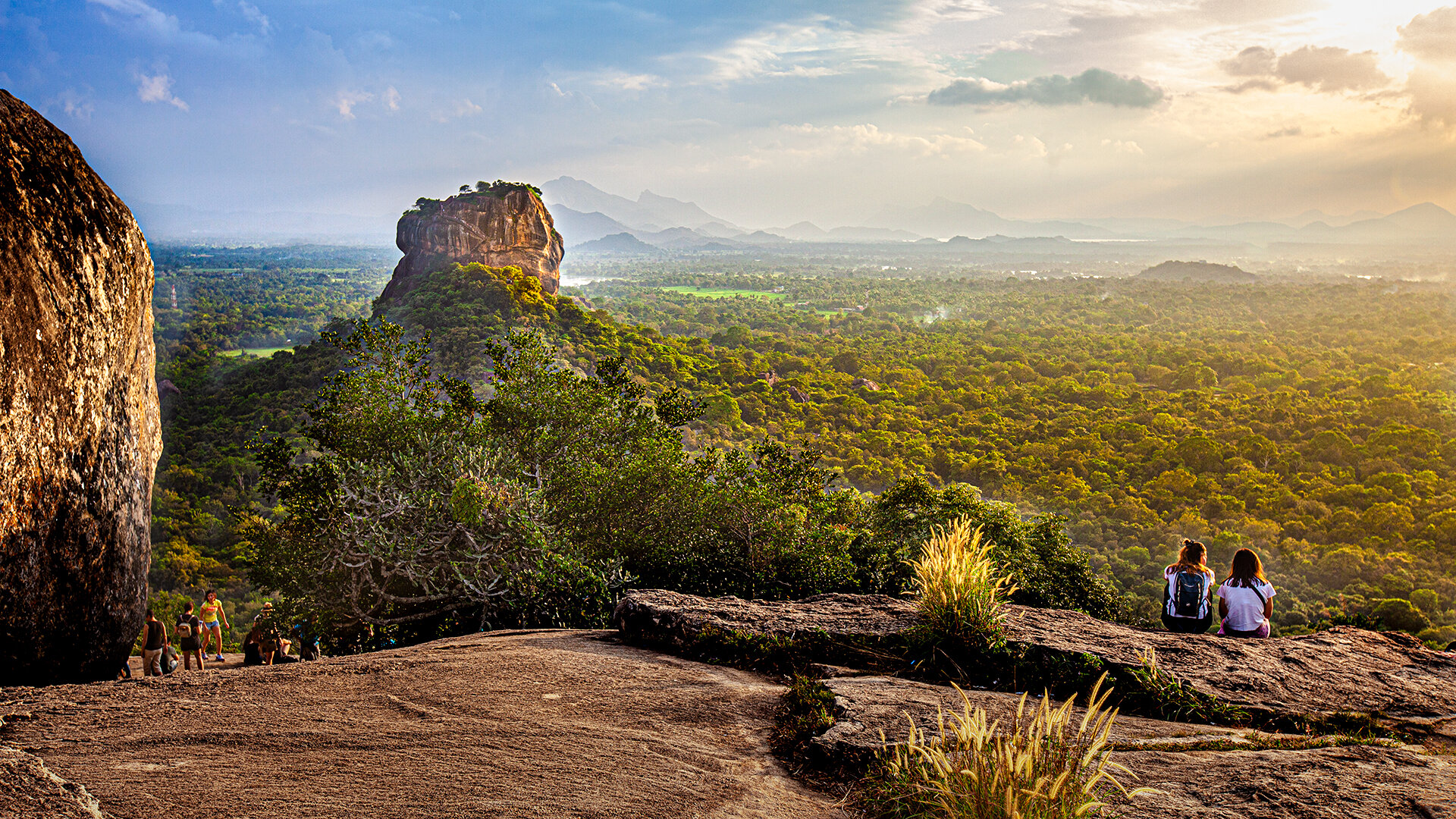
During King Kashyapa’s reign (477 to 495 AD), Sigiriya was developed into a complex city and fortress. Sigiriya today is a UNESCO listed World Heritage Site.
This photograph was taken from Pidurangala - another historically significant rock found to the north of Sigirya.
Visit the Sigiriya Fortress on Google Maps.
Visit Pidurangala on Google Maps.
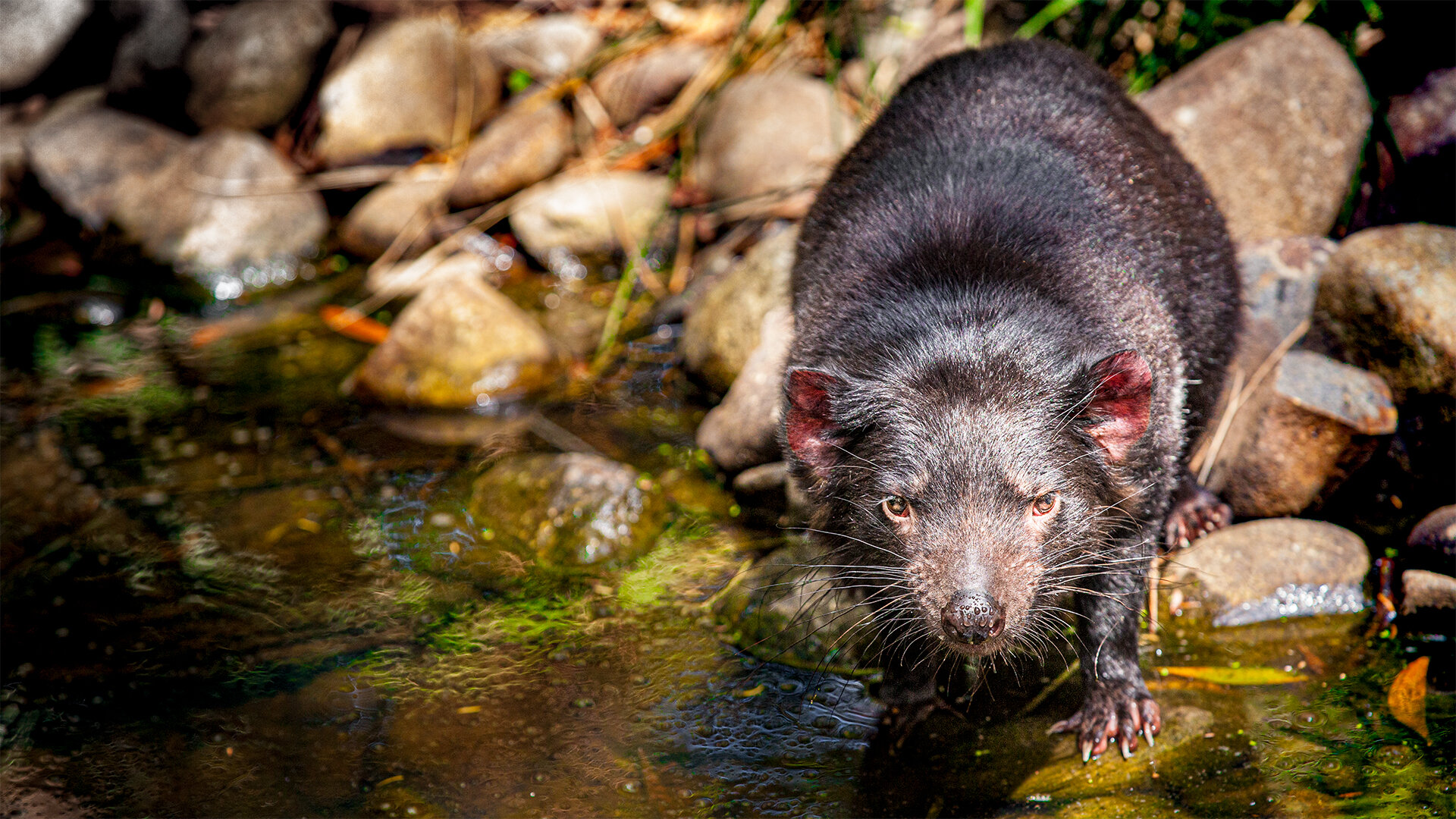
The Tasmanian Devil is the largest living carnivorous marsupial in the world and is native to Tasmania.
Visit Healesville Sanctuary website.
Read the Tasmanian Devil fact-sheet.
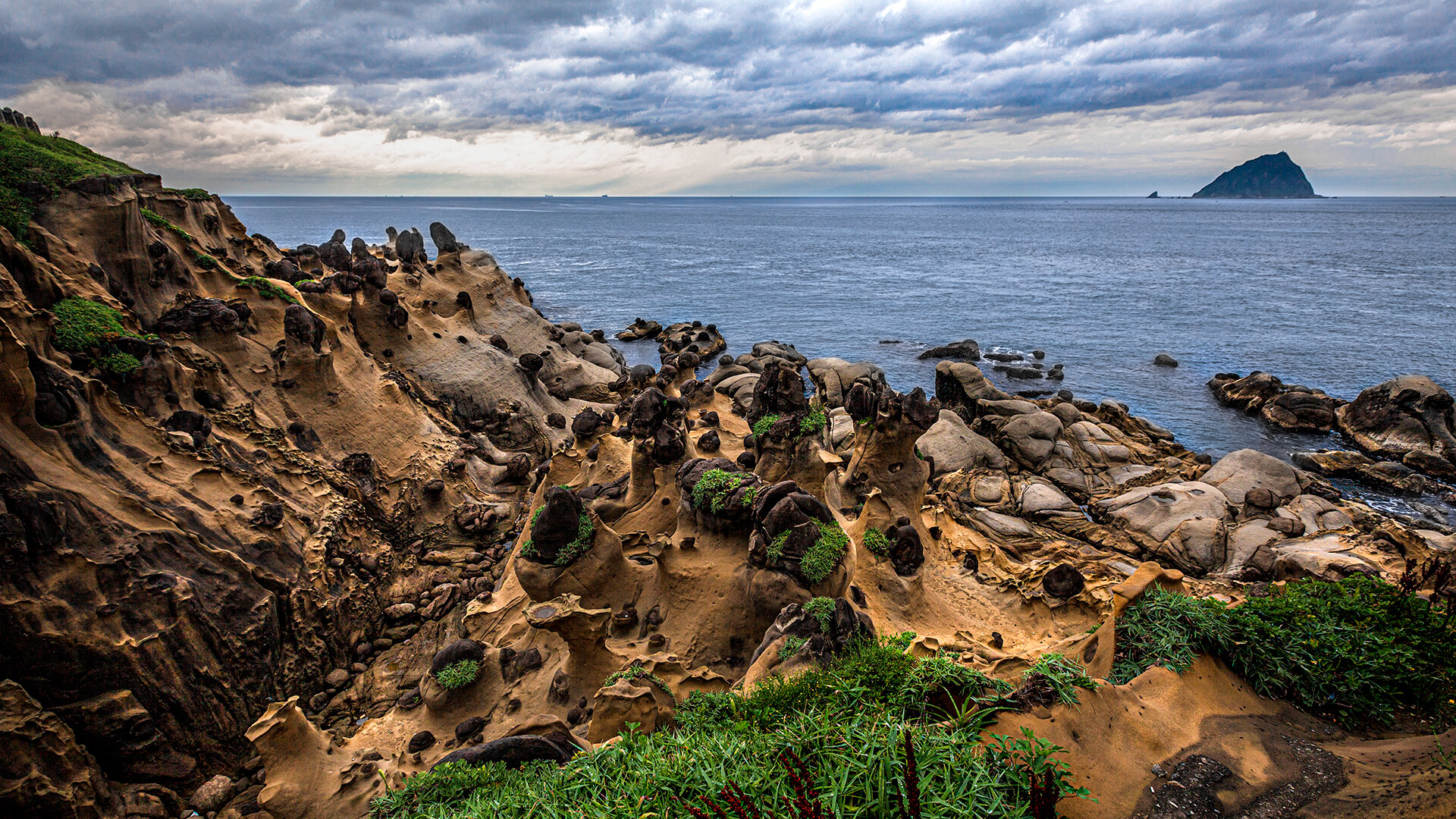
These bizarre and beautiful rock formations are the result of millions of years of wave erosion on Heping (Peace) Island in Taiwan.
See this scene on Google Maps.


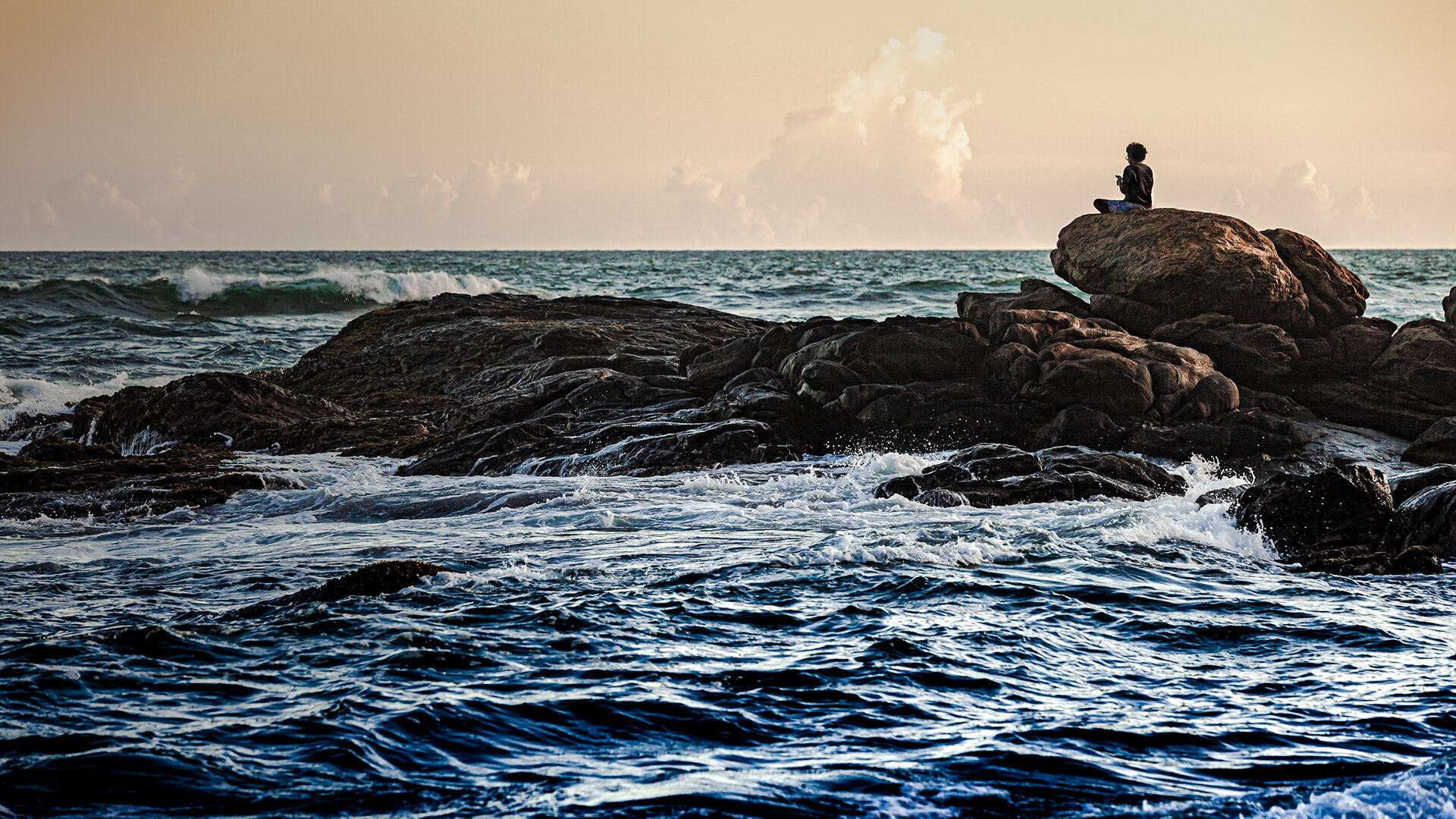
This beautiful beach is an important nesting ground for endangered sea turtles.
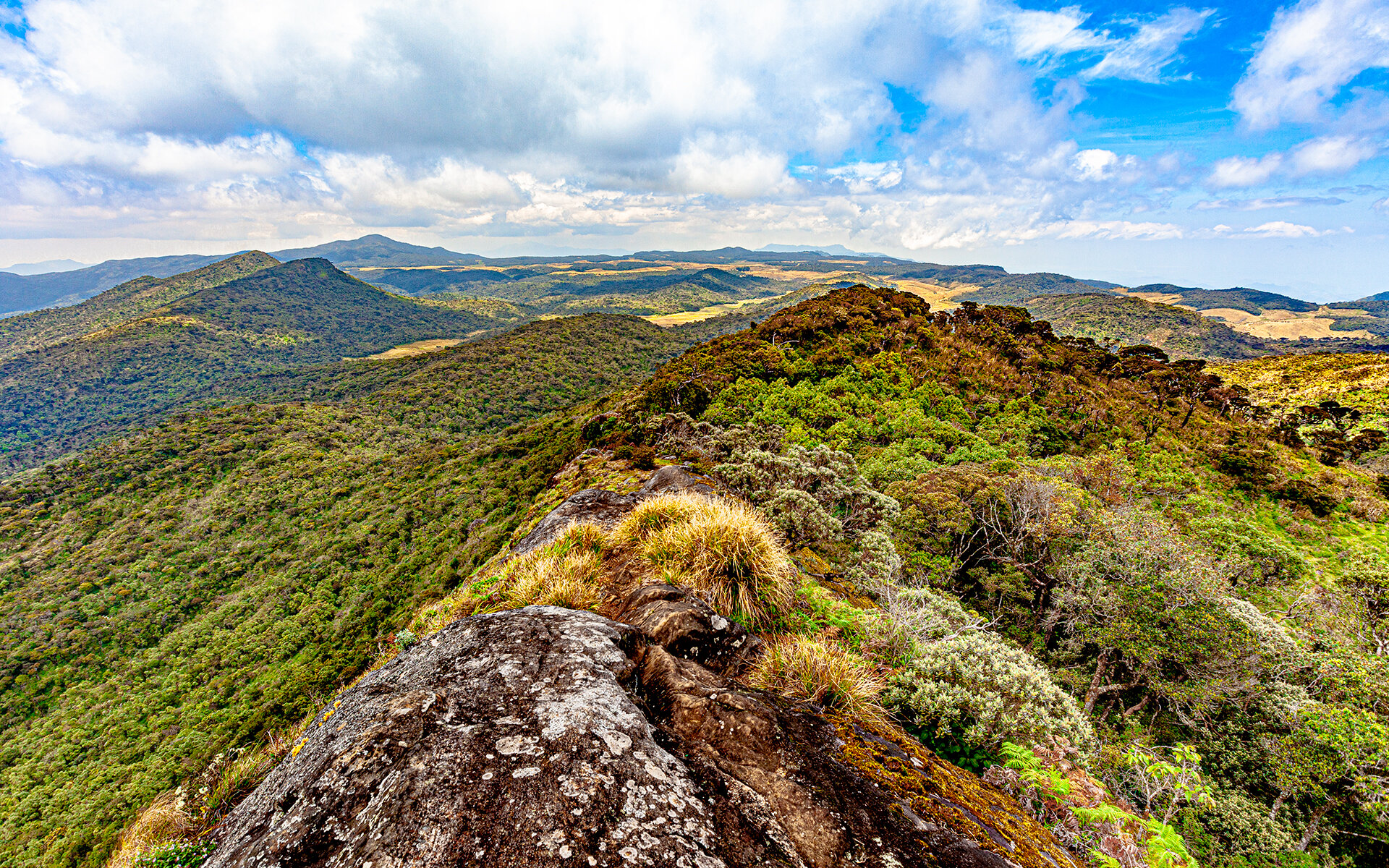
Mountain ranges, valleys, plains and cloud-forests can be seen from the peak of the Kirigalpotta mountain. At 2,388 m above mean sea level, Kirigalpotta is the 2nd tallest mountain in Sri Lanka.
Visit Kirigalpotta on Google Maps.
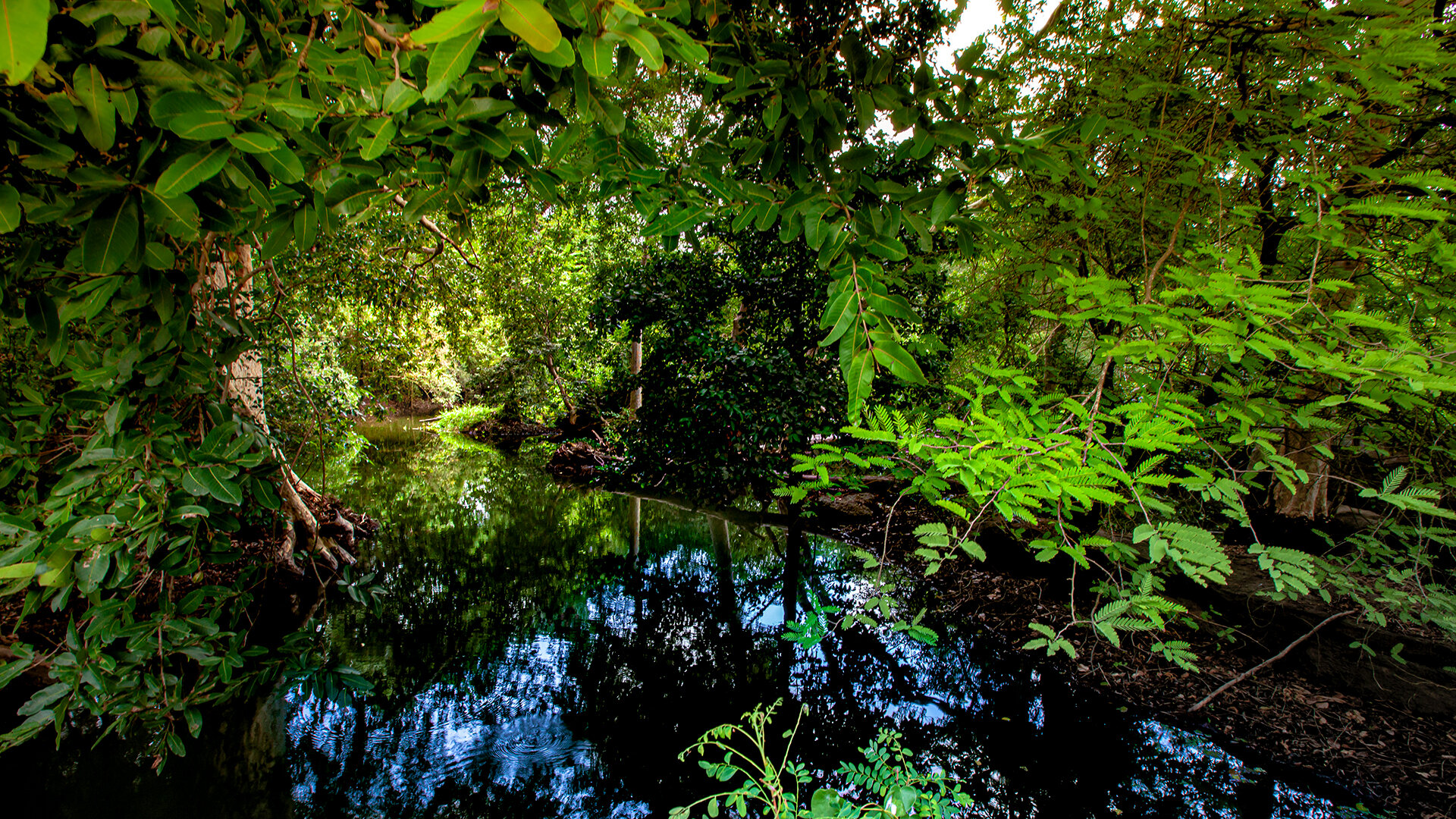
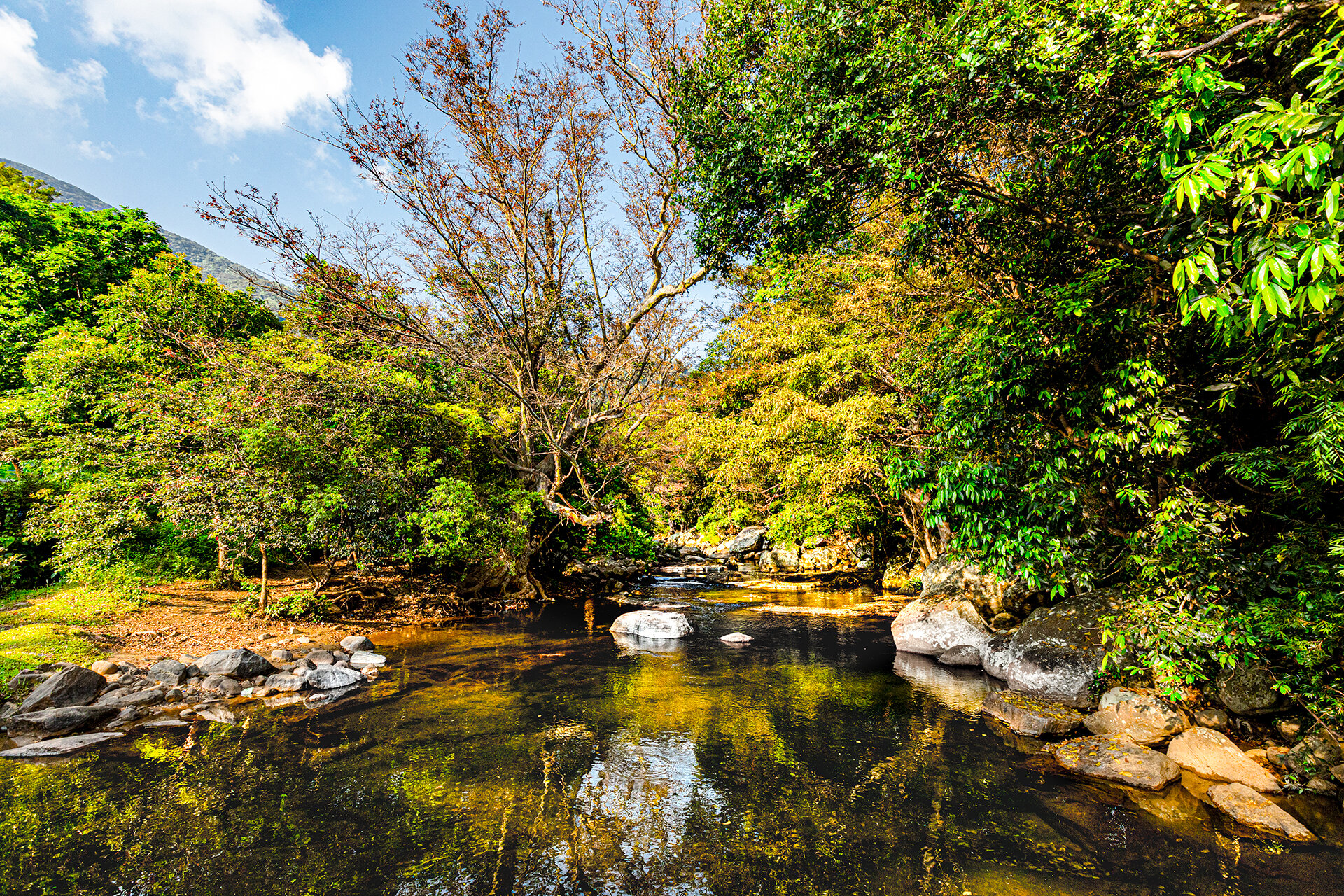
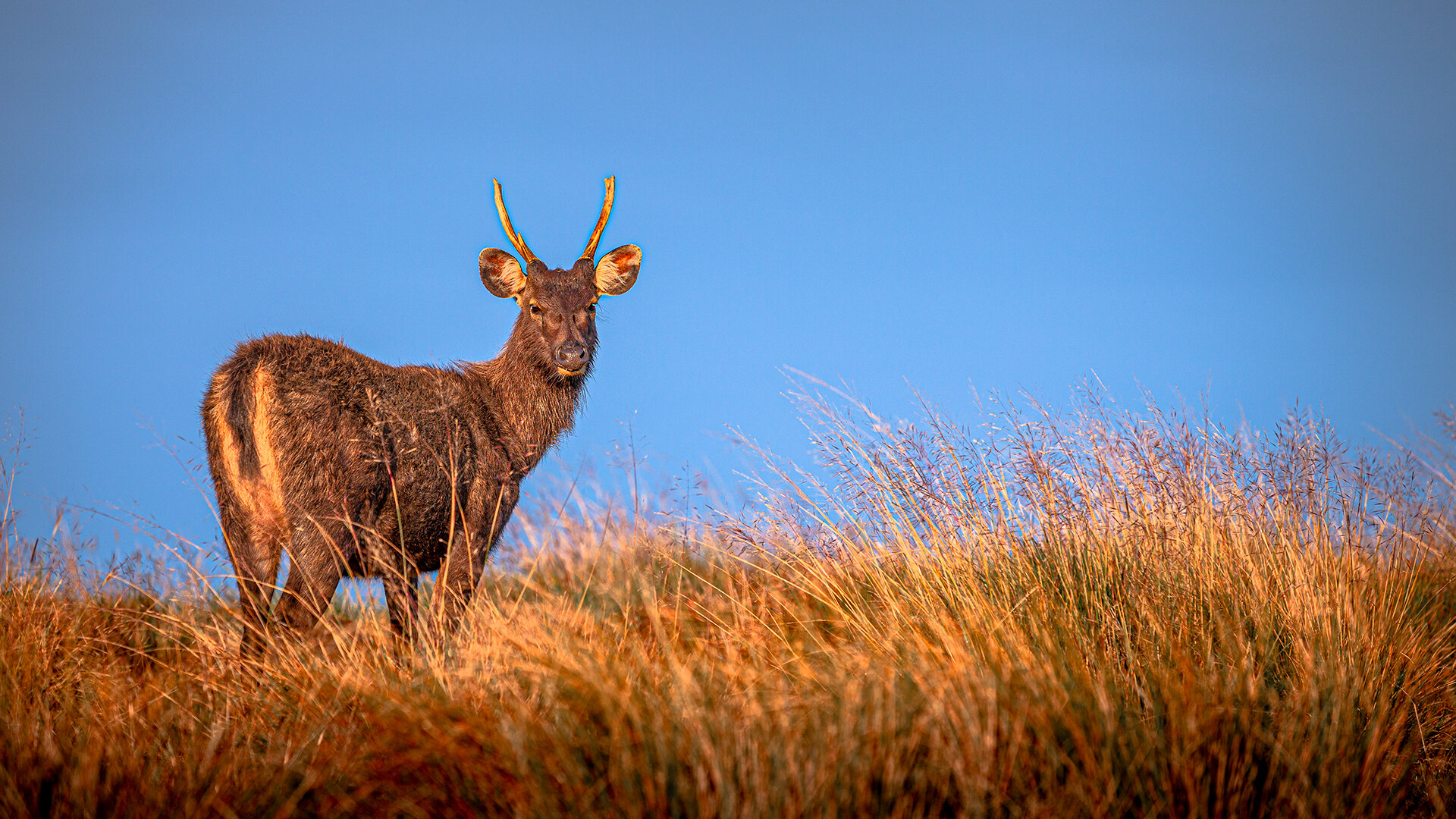
Sri Lankan sambar males weigh up to 300 kg and live in mountain forests. Large herds of sambar deer roam the Horton Plains National Park, where it is the most common large mammal.




















Situated on the wild southern coast of Yorke Peninsula, Yondah Beach in Foul Bay, is a private beach accessible to the guests of the award winning Yondah Beach House.
Surrounded by cliffs on three sides, this secluded nook consists of beautiful rock formations, a small patch of sandy beach and access to the ocean.
Kaa is the resident Scrub Python (Simalia Amethistina) at the Reptile House in Healesville Sanctuary.
Visit Kaa on Healsville Sanctuary website.
Read about Scrub Pythons on Wikipedia.
Visit the Healesville Sanctuary website.
The shores of South Australia’s Kangaroo Island are home to almost 100,000 Long Nosed Fur Seals. About 2m in length and weighing 250kg, these graceful swimmers can reach ocean depths of almost 400m. Seen here, are two pups at play in the shallow waters and rocks of Admiral’s Bay.
See this location on Google Maps
Learn about Arctocephalus forsteri
Seen here are the amazing rock formations of the Nobbies in the background, and the mouth of the blowhole in the foreground.
Visit the Nobbies on Google Maps.
Just off the Pennington Bay Road, protruding in to the ocean, this rock resembles a creature slithering in to the water when viewed from the beach during low tide.
Though many visitors see the top of this rock from Pennington Bay Road, few venture down to see it from the beach where it comes alive.
The Sea Dragon Rock as well as the Sea Dragon Cave can be accessed via the Pennington Bay Beach Access Path near the car park.
See the Sea Dragon Rock on Google Maps
Shot through an underwater research portal at the Madras Crocodile Bank Trust and Centre for Herpetology.
Visit the croc bank website.
Visit the croc bank on Google Maps.
Skull of a sambar deer on the forest floor.
Leopards are the primary predator of sambar in the central grasslands of Sri Lanka's montane zone. The estimated sambar density here is about 178/km², while the leopard density here is 11.7 per 100km².
Visit Horton Plains National Park on Google Maps.
Read the source of these statistics.
While this forest reserve covers an area of less than 90 sq.km, it is of global significance and has been designated a Biosphere Reserve and World Heritage Site by UNESCO.
Visit the Sinharaja Forest Reserve on Google Maps.
The Eagles Nest Lookout is found on the Yurrebilla Trail of the Morialta Conservation Park. This lookout is one of the best places to see the Morialta waterfall set amidst the beautiful quartzite cliffs. The seasonal falls of the park are at their grandest after the rains. The water flow is strongest during spring or winter.
Visit this location on Google Street View
During King Kashyapa’s reign (477 to 495 AD), Sigiriya was developed into a complex city and fortress. Sigiriya today is a UNESCO listed World Heritage Site.
This photograph was taken from Pidurangala - another historically significant rock found to the north of Sigirya.
Visit the Sigiriya Fortress on Google Maps.
Visit Pidurangala on Google Maps.
The Tasmanian Devil is the largest living carnivorous marsupial in the world and is native to Tasmania.
Visit Healesville Sanctuary website.
Read the Tasmanian Devil fact-sheet.
These bizarre and beautiful rock formations are the result of millions of years of wave erosion on Heping (Peace) Island in Taiwan.
See this scene on Google Maps.
This beautiful beach is an important nesting ground for endangered sea turtles.
Mountain ranges, valleys, plains and cloud-forests can be seen from the peak of the Kirigalpotta mountain. At 2,388 m above mean sea level, Kirigalpotta is the 2nd tallest mountain in Sri Lanka.
Visit Kirigalpotta on Google Maps.
Sri Lankan sambar males weigh up to 300 kg and live in mountain forests. Large herds of sambar deer roam the Horton Plains National Park, where it is the most common large mammal.